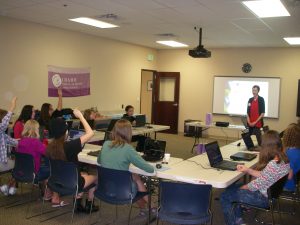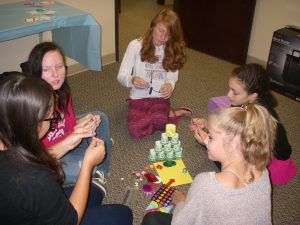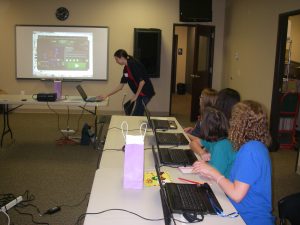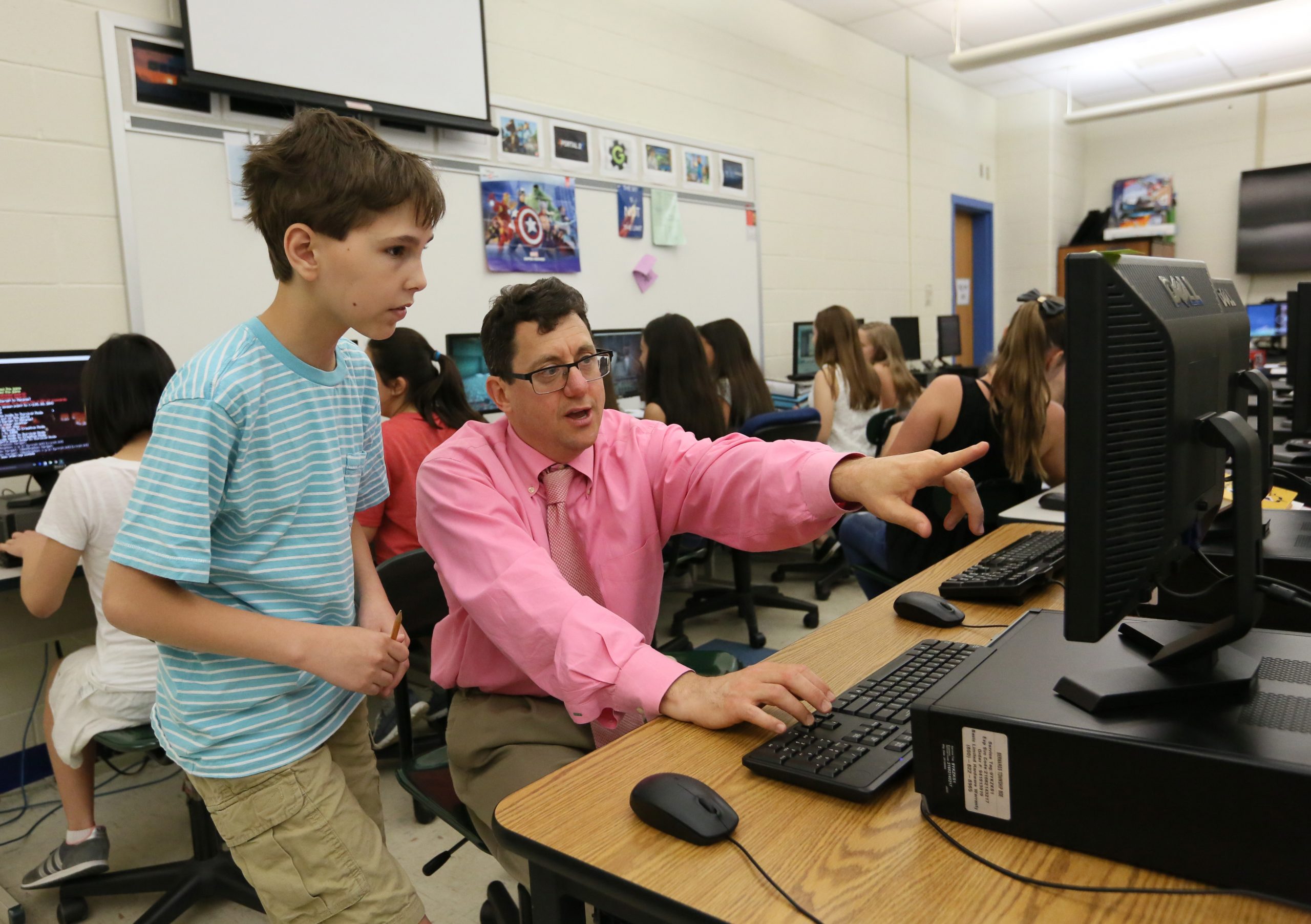Olivia Thomas was one of the winners of the National STEM Video Game Challenge (2015-16). Now studying computer science and games, interactive media, and mobile development at Boise State University, Olivia has already gained teaching experience of her own as she developed and taught a game design workshop for middle school girls.
When I was a senior in high school, I applied for and received a grant from the National Center for Women and Information Technology (NCWIT) to host a game design workshop for girls in middle school. I would have loved to attend a similar program when I was first learning game design. It was exciting to share what I knew with the 15 participants who were undertaking the same journey that I did not long ago.

When I was first trying to learn how to make games in elementary and middle school, I was often frustrated because none of the books I read actually taught me how to make what I was envisioning. In creating my own program, it was important to me that the girls left the workshop with a fully-functional game of their own design. I wanted to focus on teaching the girls how to create something they would truly be excited about.
The program was carried out through six weekly one-hour workshops. I decided to teach the girls using GameMaker Studio, a game design tool that is relatively simple to use but powerful enough that even some professional game designers choose it as their platform.
Beyond teaching the skills needed to make a game, I also wanted to make the program as fun and engaging as possible—something the girls would look forward to attending each week. The grant allowed me to include t-shirts, snacks, and decorations. Contests like the National STEM Video Game Challenge played an important role in my own game design journey, so I thought it would be fun to emulate this for my students. For extra motivation, I held a contest to determine the best game across several different categories, offering cool tech prizes donated by sponsors. I recruited an educator in the tech field to serve as judge for the competition.

On the first day of the program, we didn’t work on video games at all. As an icebreaker and a way to get the girls thinking about the design process, I used an activity that I learned at the 2015 National STEM Video Game Challenge awards ceremony. I split the girls into groups and gave each group a bag of craft materials, like cardstock and stickers. Their goal was to create a game. I had enjoyed the activity as a participant at the awards ceremony in Pittsburgh, and it went off just as well here. After twenty minutes of giggles and excited murmurs, the girls had created everything from original board games to a new form of bowling. It’s a wonderful activity because it takes the focus off of technical skills and emphasizes the design thinking skills that are just as important when designing a strong game.
The next three weeks of the program featured scaffolded step-by-step tutorials, starting with the basics of GameMaker Studio and working up to create a simple game. I would break the lessons into steps, alternating between showing the girls how to do something on a projector and then giving them time to try it on their own computers. In my past experiences teaching technology, I often showed the entire process from beginning to end, and found that students would sometimes got lost. For this program, I found it was important to give the participants time to follow along and experiment as they went.

To break up the routine, I also included short activities centering on things that I learned from designing games on Gamestar Mechanic. For example, one day we learned about how to give constructive feedback by analyzing game reviews on Gamestar. On another day, we were able to take an exciting tour of Hewlett Packard to see STEM jobs in action.
I can’t begin to describe the feeling of seeing the participants in my program get increasingly excited about their games and ultimately, create something that they were proud of. I saw them go through the same frustrations that I had when I was first learning. Given the right tools and assistance, however, the girls were able to overcome their hurdles and ultimately experience the wonder of bringing their ideas to life. Witnessing their triumph in the pursuit of new skills was a poignant reminder of my own ongoing journey as a game design, and overcoming those challenges together was inarguably my favorite part of developing the program.




